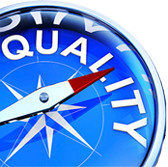



What is a Medical Device (in Europe) – based on the Medical Devices Regulation (MDR)?
"medical device" means any instrument, apparatus, appliance, software, implant, reagent, material or other article intended by the manufacturer to be used, alone or in combination, for human beings for one or more of the following specific medical purposes:
and which does not achieve its principal intended action by pharmacological, immunological or metabolic means, in or on the human body, but which may be assisted in its function by such means.
The following products shall also be deemed to be medical devices:
* “For the purposes of this Regulation, medical devices, accessories for medical devices, and products listed in Annex XVI to which this Regulation applies pursuant to paragraph 2 shall hereinafter be referred to as ‘devices’.” Annex XVI lists product groups without an intended medical purpose, e.g. coloured contact lenses.
What are the classes of medical device (in Europe under the MDR)?
Medical devices (including active implants) are classified according to the risks they pose to the patient and users. Class I are the lowest risk and class III are the highest risk. Classes include:
Class I, Class I measuring, Class I sterile (e.g. a crutch, device for measuring blood pressure which is non-active and non-invasive, sterile syringe)
Class 2a (e.g. Infusion tubing set with needles)
Class 2b (e.g. therapeutic X-ray)
Class III (e.g. implantable heart valve, implantable defibrillator)
If the medical device is used for testing patient samples for diagnostic purposes, it is likely to come under the In-vitro Diagnostic Medical Devices Regulation.
Key parameters to know when deciding upon the classification of the device include the type of device, mode of operation and intended use.
What are the classes of medical device (in Europe under the In-vitro Diagnostic Medical Devices Regulation – “IVDR”)?
In-vitro Diagnostic Medical Devices (IVDs) are now classified based on risk (this is one of the big changes introduced by the IVDR) with Class A being the lowest risk and Class D the highest. Classes include:
Class A – e.g. products for general laboratory use such as buffer solutions, general culture media and histological stains. Specimen receptacles.
Class B – e.g. self tests for pregnancy, fertility and cholesterol level.
Class C – e.g. detection of sexually transmitted agents. Human genetic testing.
Class D – e.g. detection of transmissible agents (e.g. HIV, HBV) in order to assess their suitability for transfusion, transplantation, etc. ABO blood grouping.
What are European Directives and Regulations?
EU Directives are documents published by the European Commission and apply to the member states of the EU (e.g. Germany, France, UK, etc. governments). They do not have a legal standing for manufacturers but the member states are required to transpose these into National Laws. The manufacturer of the product coming under the Directive is required to meet the national law in each country in which they put their products onto the market. National transpositions of Directives may result in slightly different interpretations in different member states and the process of transposition may take several years.
EU Regulations enter into force 20 days following publication and do not require transposition into National Laws. Therefore they are a much quicker to implement and result in a more consistent interpretation.
The purpose of a directives and regulations are to reduce barriers to trade and allow the free movement of goods across the EU by having a harmonised set of requirements. They are also intended to ensure a high level of safety.
The CE mark is used by the manufacturer to show that they meet the requirements of the Directive (and laws into which it was transposed) or Regulation. If a Notified Body was involved in the assessment of the product against the directive, their Notified Body number is required to be put after the CE mark.
Who are the key players?
Note: see the Regulations for complete and legal definitions of the above terms

Regulatory compliance can be a challenge with complex requirements constantly evolving in different markets.
Read more
Quality Management Systems are the foundation of all good businesses, whether certified or not.
Read more
Making the best use of your key assets - your employees - is vital for a successful business.
Read more
Sterilisation is a "special process" requiring careful validation and control to ensure the safety of devices.
Read more